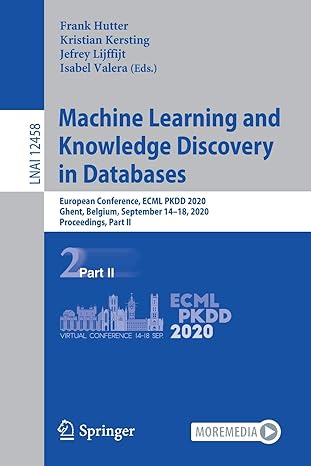Question
Generate a sequence diagram for 1. Maintain Employee Information 1.1 Brief Description This use case allows the Payroll Administrator to maintain employee information. This includes
Generate a sequence diagram for
1. Maintain Employee Information
1.1 Brief Description This use case allows the Payroll Administrator to maintain employee information. This includes adding, changing, and deleting employee information from the system. 1.2 Flow of Events
1.2.1 Basic Flow This use case starts when the Payroll Administrator wishes to add, change, and/or delete employee information from the system.
1. The system requests that the Payroll Administrator specify the function he/she would like to perform (either Add an Employee, Update an Employee, or Delete an Employee)
2. Once the Payroll Administrator provides the requested information, one of the sub flows is executed.
If the Payroll Administrator selected Add an Employee, the Add an Employee subflow is executed.
If the Payroll Administrator selected Update an Employee, the Update an Employee subflow is executed.
If the Payroll Administrator selected Delete an Employee, the Delete an Employee subflow is executed.
1.2.1.1 Add an Employee
The system requests that the Payroll Administrator enter the employee information. This includes:
Name Employee type (hour, salaried, commissioned) Mailing address Social security number Standard tax deductions Other deductions (401k, medical) Phone number Hourly rate (for hourly employees) Salary (for salaried and commissioned employees) Commission rate (for commissioned employees) Hour limit (some employees may not be able to work overtime)
1. Once the Payroll Administrator provides the requested information, the system generates and assigns a unique employee id number to the employee and sets the paycheck delivery method to default of pickup. The employee is added to the system.
2. The system provides the Payroll Administrator with the new employee id.
1.2.1.2 Update an Employee
1. The system requests that the Payroll Administrator enter the employee id.
2. The Payroll Administrator enters the employee id. The system retrieves and displays the employee information.
The Payroll Administrator makes the desired changes to the employee information. This includes any of the information specified in the Add an Employee sub-flow.
4. Once the Payroll Administrator updates the necessary information, the system updates the employee record with the updated information.
1.2.1.3 Delete an Employee
1. The system requests that the Payroll Administrator specify the employee id.
2. The Payroll Administrator enters the employee id. The system retrieves and displays the employee information.
3. The system prompts the Payroll Administrator to confirm the deletion of the employee.
4. The Payroll Administrator verifies the deletion.
5. The system marks the employee record for deletion. The next time the payroll is run, the system will generate a final paycheck for the deleted employee and remove the employee from the system.
1.2.2 Alternative Flows
1.2.2.1 Employee Not Found If in the Update an Employee or Delete an Employee sub-flows, an employee with the specified id number does not exist, the system displays an error message. The Payroll Administrator can then enter a different id number or cancel the operation, at which point the use case ends.
1.2.2.2 Delete Cancelled If in the Delete An Employee sub-flow, the Payroll Administrator decides not to delete the employee, the delete is cancelled and the Basic Flow is re-started at the beginning.
Step by Step Solution
There are 3 Steps involved in it
Step: 1

Get Instant Access to Expert-Tailored Solutions
See step-by-step solutions with expert insights and AI powered tools for academic success
Step: 2

Step: 3

Ace Your Homework with AI
Get the answers you need in no time with our AI-driven, step-by-step assistance
Get Started


